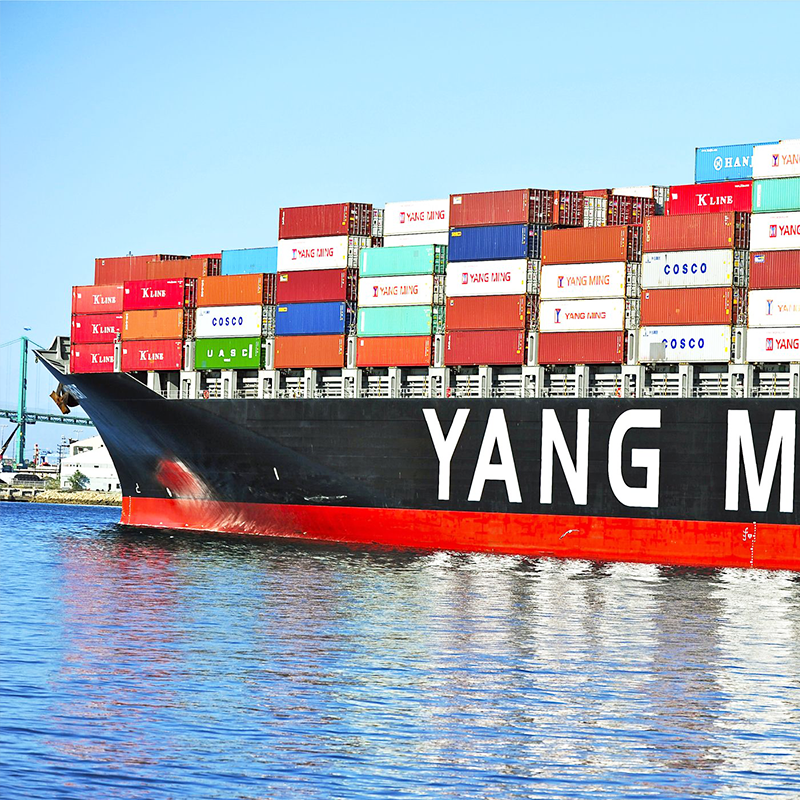
The seven steps of international shipping are divided into export hauling, origin processing, export declaration, sea transportation, import customs clearance, destination processing and import transportation.
1. Export hauling
The first step in international maritime transport is export towing, which involves the transfer of goods from the shipper to the premises of the freight forwarder. For the goods with a small volume, the freight forwarder will choose to transport them to the export center (origin warehouse), waiting for centralized consignment. Export towing is usually done by road (by truck), rail or a combination, and the cost is usually paid by the shipper, but can also be negotiated and paid by the consignee.
2. Export declaration
For each piece of goods that is about to leave the country, the relevant formalities must be completed to meet the regulatory requirements. Customs declaration is a process of making a declaration and submitting the required documents to the customs, which can only be carried out by companies that have customs clearance qualifications and are recognized by the customs (the so-called customs brokers).
Export DECLARATION MAY BE DONE BY A QUALIFIED FREIGHT FORWARDER OR BY A CUSTOMS BROKER DIRECTLY DESIGNATED BY THE SHIPPER, WHO MAY NOT BE INVOLVED IN ANY OTHER PART OF THE shipping process. Export declaration must be completed before the goods leave the country or, if not done by a freight forwarder, usually before the goods enter the forwarder's warehouse of origin.

3. Processing of origin
The processing of origin includes the physical handling and inspection of all goods from receipt at the warehouse of origin to shipment. Although there is a lot of work involved, it is all coordinated by freight forwarders. In short, when the forwarder receives the cargo, it checks it (tally it), plans to load it, merges it with other cargo, puts it into a container and transport it to the port of export, where it is loaded onto a ship. In these processes, the costs incurred are paid by the shipper or consignee.
4, shipping
In this link, the freight forwarder signs the container transport contract with the shipping company. In this case, the shipper or the consignee cannot get direct contact with the shipping company. Sea freight is for the shipper or consignee's account. It SHOULD be noted, however, that there are various surcharges, such as fuel surcharges, currency depreciation surcharges, etc., all borne by the shipper or consignee.
5. Import customs clearance
Import clearance usually begins before the goods arrive in the destination country. Import CUSTOMS clearance shall be handled by the customs broker designated by the forwarder or consignee, who shall make the declaration form, declare it to the local customs together with the relevant documents, and go through various procedures stipulated by the customs. Generally speaking, import clearance procedures must be completed before the goods leave the bonded area of the destination country.
6. Destination processing
The goods also need to be processed in the destination country before they can be released to the consignee. Destination handling involves transferring containers from the ship to shore and from the port to the freight forwarder's warehouse in the destination country. It also includes container unloading and cargo preparation for pickup by the consignee. Note that under normal circumstances, all the charges must be paid before the goods can be received, and the fee payer can be either the shipper or the consignee.
7. Import transportation
The last step in international shipping is to deliver the goods to the consignee. Generally speaking, the forwarder or consignee's designated transportation company will transport the goods from the forwarder's warehouse to the designated receiving address, but the specific discharge of the goods is done by the consignee. Of course, you can also pay an extra fee and let the forwarder or transportation company do the operation.